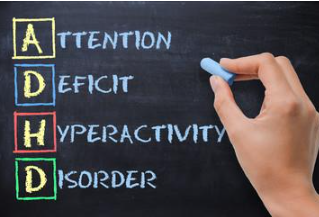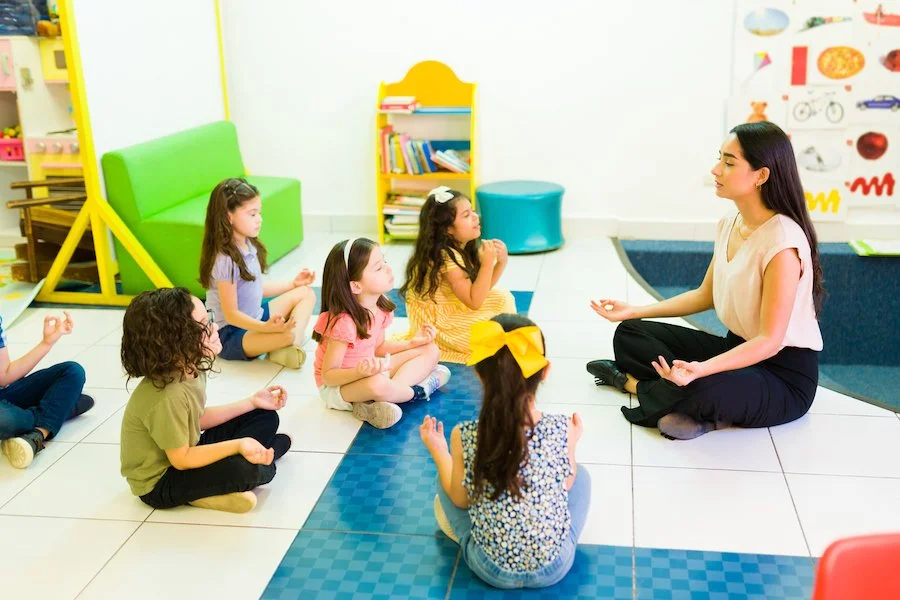Fun and Creative Ways to Support Students with ADHD
Picture this: You’ve got a student who’s bouncing in their seat, doodling on the desk, and seems to have lost the homework…again. Sound familiar? If you’ve ever worked with a student with ADHD (Attention Deficit Hyperactivity Disorder), you know that keeping them focused and engaged can feel like trying to juggle flaming swords. But here’s the thing—students with ADHD are often creative, energetic, and full of potential! The key is learning how to support them in a way that makes learning fun, manageable, and motivating.
Let’s dive into some fun and relatable best practices for supporting students with ADHD—because with the right strategies, they can thrive!
What is ADHD?
ADHD is the abbreviation for Attention-Deficit Hyperactivity Disorder. ADHD is one of the most common mental health disorders. The most obvious symptoms include the following:
Inattention
Hyperactivity i.e. fidgeting and incapability of sitting still
Impulsivity
While many think that children with ADHD lack skills struggle with feelings of poor self-esteem, worthlessness, and anxiety; it can also be quite the opposite. Luckily, with the right treatment from the best mental health professional, they can succeed in all areas of life well into adulthood.
Break it down: Small Steps for Big Wins
For children with ADHD, it can be quite overwhelming when faced with a long list of tasks. It is the equivalent of being asked to run for miles and miles with no end in sight. The best strategy to take with a student with ADHD is to break it down into digestible bites.
Breaking directions and tasks into more manageable steps can help ease the anxiety of the child with ADHD. By allowing them to process small pieces at once, they can effectively manage the tasks and get the job done with ease. This can promote higher self-esteem and confidence in students!
Why it works:
ADHD brains can become frustrated and overwhelmed with too much information. By grouping everything into smaller pieces, children can focus on one concept at a time. Chunking is an effective strategy to help with this. By chunking tasks into bite-sized pieces, students can focus on one thing at a time and build momentum with small successes.
How to do it:
For a big assignment, break it down into clear, short steps like "Research one source," "Write the introduction," or "Create the title page." You can even turn it into a game: “Let’s finish these three tasks before the timer runs out!”
Movement is Magic: Let Them Wiggle!
By allowing students with ADHD to move around, learning can become fun! Students with ADHD will notoriously wriggle in their seats and tap their pencils on the desks. Implementing movement into the lesson plan embraces their need for movement and allows them to better focus on the task.
Why it works:
Movement is beneficial for students with ADHD—it helps them to better focus. Physical movements additionally stimulate the brain. This can be widely helpful in regulating emotion, attention, and impulse control.
How to do it:
Implement movement and action breaks into lesson plans and throughout the day. By allowing for “brain breaks”, such as stretching or taking a walk, students can get out their wriggles and build up, excess energy. This allows them to better focus when they are done.
Make it a game: Turn Lessons into Challenges
Students who have ADHD respond well to games and excitement. If they are having fun and excited, they will likely focus better and complete the task more effectively. By using gameplay, all students—especially those with ADHD—will feel more motivated. With more motivation, higher interest and better success rates for the lesson plan happen.
Why it works:
ADHD brain wants constant stimulation. Traditional lectures can be perceived as boring and frustrating for kids with ADHD. Making the task a game stimulates motivation, movement, participation, and engagement.
How to do it:
By turning class lesson plans and activities into competitions, students will jump to participate. Using phrases such as “Who can solve this math problem first?” and “Let’s see if we can finish the reading before the end of class!” can widely increase interactivity and engagement in the classroom. You can even offer a small reward or prize at the end of the game!
Visual aids and cues: Keep Directions Clear and Consistent
Kids with ADHD notoriously struggle with staying on track. This can be increasingly true when directions and lessons are delivered verbally. Utilizing visual aids and cues can significantly help these students to retain and comprehend instructions.
Visual aids and cues are an absolute game-changer. Students with ADHD will better understand and remember what you tell them by having a visual reference.
Why it works:
Visual learners who have ADHD need tangible material to have the memory of what they have heard or witnessed. Using visual aids and cues allows them to remove the need to have a wider attention span or better working memory.
How to do it:
Use charts, picture cues, and diagrams when giving instructions and lectures. Post clear, concise, step-by-step instructions for the assignments.
Did you know that a graphic organizer is a super helpful tool that can help break down long reading passages into
Creating checklists can additionally reap many benefits for all students, specifically those with ADHD.
Positive reinforcement: Catch Them Doing Something Right
Students with ADHD are often used to hearing "Stop fidgeting!" or "Pay attention!"—and it can wear them down. Instead, focus on what they’re doing right, and use positive reinforcement to encourage their strengths.
When students do a great job, tell them! This is the age where self-esteem and confidence can either be grown or destroyed.
Many teachers make the mistake of chastising children, telling them to “sit still” or to “stop fidgeting”, not understanding that those behaviors may be out of their control. Instead, by telling students what they are doing right, you are reinforcing and encouraging their strengths.
Why it works:
Positive reinforcement is motivating and builds confidence in students. This then leads to repeating these good behaviors, which allows them to academically and personally succeed. Acknowledging even the smallest of efforts creates a huge, long-lasting impact.
How to do it:
When students are focused, “catch” the student as they are on task or showing signs of improvement. Praise specific behaviors like, “Great job staying focused during the first 10 minutes of class!” or “I love how you remembered to bring your homework today!” You can also use a reward system where they earn tokens or points for positive behaviors.
Flexible focus: Use Timers and Breaks to Manage Attention
One of the biggest challenges for students with ADHD is sustaining attention for long periods. But who says learning has to happen in hour-long blocks? Timers and strategic breaks can help manage focus while preventing burnout.
Allowing time and space for mental regrouping is a wonderful way to keep students focused and prevent burnout. Timers and break time can remarkably help manage attention spans.
Why it works:
ADHD brain has a hard time focusing on academic tasks and teachings. They can easily lose interest and grow bored—and fast. By using timed, smaller bursts of work immediately followed by a mental break, students have the chance to stay engaged and motivated without becoming frustrated.
How to do it:
Use the “Pomodoro Technique”. This is where students work diligently for 20 minutes. It is immediately followed by a 5-minute break afterward. Use a timer so students can track how much time they have left. During the break time, allow students to physically move around to release any pent-up emotions and stresses.
Individual support: Provide Choices and Ownership
Students with ADHD often feel more motivated when they have some control over their learning experience. Giving them choices allows them to feel empowered and engaged.
By offering more choices to students, they can feel supported, engaged, and empowered in their stance. Letting them feel like they can make their own choice based on their wants is extremely beneficial.
Best practice tip: Offer options on how they may complete assignments. They can also be provided with options on how to engage in lesson plans. For example, allow students to choose between giving a presentation or creating a poster versus writing a complete report.
Pro tip: inspire students to set their own goals. This allows them to reflect on their progress and builds self-esteem in the process. It additionally builds self-awareness and provides them with a sense of ownership on their academic journey.
Use technology and Visual Supports
Technology is a proven asset for students with ADHD. By implementing technology into lesson plans, students can focus better and are wildly more engaged and interested. From organizational apps to making learning more interactive, endless resources exist for these students.
Best practice tip: Use digital planners and apps to help students stay organized. You can help them organize their schedules and stay on top of their homework and due dates. Visual timers are equally helpful in keeping students focused as they learn.
Pro tip: Search for educational apps and games that turn lesson plans into interactive adventures. ADHD brain needs constant stimulus, so these students will learn better by using technology and play, the best motivator.
Practice mindfulness and relaxation strategies
ADHD brain can make people feel overwhelmed, overstimulated, and overstressed. Therefore, implementing relaxation techniques and teaching mindfulness can help calm the overstimulated mind.
Students with ADHD may feel mentally frazzled when trying to focus for long periods of time. These calming strategies teach students to regulate emotions and help manage their stress; therefore, improving attention, motivation, and engagement.
Best practice tip: Showcase mindfulness exercises at the beginning of each lesson plan. It may be helpful to repeat this strategy at the end of the lesson. Use simple breathing exercises or guided imagery.
Pro tip: Use relation and mindfulness apps that are customized for kids such as GoNoodle and Calm Kids.
Encourage collaboration & Group Work
Kids with ADHD excel in collaborative, group atmospheres. Implement group work so they can engage and work with other students. This type of collaborative strategy allows students to learn from others, stay engaged, and be excited about classroom activities.
Best practice tip: ADHD students and students who showcase patience and calmness should be paired together for the best balance. This match allows all students to stay on track and get the job done.
Pro tip: Opt for interactive group work which involves tasks and roles that pave the way for creativity and movement. For example, creating a skit or building a project together is a wonderful and collaborative group project.
Practice patience and be flexible
Most importantly, you must practice patience and flexibility with your students. Each student deserves your patience, support, empowerment, and kindness—especially those with learning and mental disorders. It is vital to adapt and be flexible, all the while promoting and practicing flexibility as you teach the next generation of wonderkids.
Best practice tip: Adjust your teaching methods as needed. All students are not created equal!
Pro tip: Focus on the progress of perfectionism. Celebrate all your small winds. Reinforce the notion that learning is a journey, both for you and your students.
Bottom Line
Supporting students with ADHD isn’t about changing who they are—it’s about recognizing their unique strengths and providing the right tools and strategies to help them thrive. By using these best practices, you can create a learning environment that’s fun, engaging, and tailored to their needs. With the right support, students with ADHD can channel their energy, creativity, and curiosity into success both in and out of the classroom!
The Mind Center, LLC is a thought leadership mental health brand dedicated to helping parents, their kids, and the schools they attend. At the heart of what we do, we have your little one's best interest in mind. We help kids thrive, by providing school-based testing services that put your mind at ease, and make their educational wins something you and your child can be proud of. Be sure to check out the testing and support services that we offer by clicking here. To learn more about the services, book a call today! Click here









